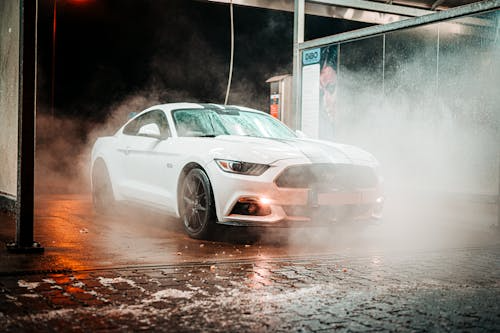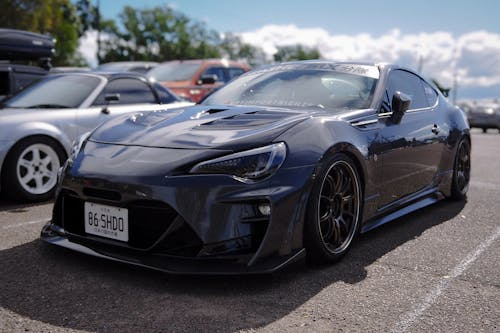How Automotive Headlight Manufacturers Solve the Contradiction Between Heat Dissipation and Lifespan|BLIAUTO Professional Insight
Bliauto provides professional insight into how automotive headlight manufacturers solve the heat-dissipation vs. lifespan trade-off. Discover LED cooling strategies, materials, and thermal design from Brand Manufacturers LED Headlight, Manufacturing LED Headlight, and Wholesale LED Headlight experts.
- I. Introduction: Why Are Heat Dissipation and Lifespan the Core Challenges for Headlight Manufacturers?
- II. The Core of the Contradiction: The Restrictive Relationship Between Heat Dissipation and Lifespan
- 1. Why Do LEDs Need Heat Dissipation?
- 2. Why Does Lifespan Depend on Heat Dissipation?
- III. Common Heat Dissipation Methods Used by Manufacturers
- 1. Passive Cooling
- 2. Active Cooling
- 3. Advanced Materials & Structural Cooling
- IV. How Manufacturers Solve the Heat Dissipation vs. Lifespan Contradiction
- 1. Design-Level: Optimized Thermal Management Architecture
- 2. Material-Level: Advanced Thermal Conductive Materials
- 3. Driver-Level: Intelligent Thermal Control
- 4. Production-Level: Rigorous Aging & Environmental Testing
- V. Case Studies: Manufacturers’ Solutions for Heat and Lifespan
- VI. Future Trends: New Approaches for Headlight Manufacturers
- VII. Frequently Asked Questions (Q&A)
- VIII. Conclusion
I. Introduction: Why Are Heat Dissipation and Lifespan the Core Challenges for Headlight Manufacturers?
Throughout the evolution of automotive lighting—from halogen lamps to HID xenon lamps to modern LED headlights—each technological upgrade has brought higher brightness, lower energy consumption, and greater design flexibility.
In particular, LED headlights, with their compact size, high luminous efficiency, and long service life, have quickly become the mainstream in automotive lighting.
However, LED headlights are not “invincible.” In real-world applications, the contradiction between heat dissipation and lifespan remains the core challenge that manufacturers must address:
Excessive LED chip operating temperature can lead to brightness decay, color temperature drift, or even total failure.
Limited space inside the headlight housing restricts heat dissipation structures, making it difficult for heat to escape.
Advertised lifespans (e.g., 30,000 hours) are often achieved under ideal laboratory conditions, while in real-world driving, poor thermal management can drastically reduce lifespan.
Therefore, headlight manufacturers must strike a balance between high brightness output and long lifespan retention—not just a technical issue, but also a key factor in market competitiveness.
II. The Core of the Contradiction: The Restrictive Relationship Between Heat Dissipation and Lifespan
1. Why Do LEDs Need Heat Dissipation?
Essentially, an LED chip is a semiconductor device, and its luminous efficiency is not 100%. During operation, about 60%–70% of electrical energy is converted into heat. If this heat cannot be dissipated effectively, it leads to:
Rising chip temperature → accelerated light decay;
Phosphor degradation → color temperature drift, light turning yellowish;
Driver circuit overheating → unstable current or burnout;
Reduced overall performance → compromised nighttime driving safety.

2. Why Does Lifespan Depend on Heat Dissipation?
The widely advertised “30,000 to 50,000 hours lifespan” is only valid if the chip operates within its optimal temperature range (typically 60–80°C). Once the temperature exceeds 100°C, lifespan drops sharply:
Every 10°C increase may cut LED lifespan in half;
Long-term high temperatures accelerate solder joint fatigue, lens degradation, and sealing material aging.
Conclusion: Poor heat dissipation = drastically shortened LED headlight lifespan.
III. Common Heat Dissipation Methods Used by Manufacturers
To address the heat–lifespan contradiction, automotive headlight manufacturers typically adopt the following thermal management designs.
1. Passive Cooling
Aluminum substrates: Transfer heat quickly from the LED chip to the housing.
Cooling fins: Increase surface area to accelerate heat exchange with air.
Thermal grease/copper plates: Improve efficiency of thermal pathways.
Advantages: Stable, noiseless, long-lasting.
Disadvantages: Limited cooling capacity, unsuitable for ultra-high-power LEDs.
2. Active Cooling
Fan cooling: A miniature high-speed fan inside the housing accelerates airflow.
Liquid cooling systems: Used in some high-end vehicles to circulate coolant and remove heat.
Advantages: High cooling efficiency, supports high-brightness LEDs.
Disadvantages: Fans may generate noise, accumulate dust, and have shorter lifespans than LEDs.
3. Advanced Materials & Structural Cooling
Graphene heat spreaders: Better thermal conductivity than metal, lightweight for compact spaces.
Heat pipe technology: Similar to laptop cooling, using liquid-phase change to transfer heat.
Ceramic substrates: Replace aluminum substrates to improve thermal conductivity and high-temperature resistance.
IV. How Manufacturers Solve the Heat Dissipation vs. Lifespan Contradiction
1. Design-Level: Optimized Thermal Management Architecture
Strategic chip layout to avoid hot spots.
Multi-layer thermal pathway (chip → substrate → heat sink → housing → air).
Thermal simulation analysis via CAE to optimize heat flow distribution.

2. Material-Level: Advanced Thermal Conductive Materials
Copper–graphene composites for superior heat transfer compared to aluminum.
High thermal-conductivity silicone encapsulation to reduce thermal resistance.
Lightweight magnesium–aluminum alloy housings to balance cooling and structural strength.
3. Driver-Level: Intelligent Thermal Control
NTC temperature sensors for real-time monitoring.
Automatic current reduction when temperature is too high to prevent overheating.
Full power release in low-temperature environments to balance brightness and lifespan.
4. Production-Level: Rigorous Aging & Environmental Testing
High–low temperature cycling (-40°C to 120°C).
Salt spray corrosion tests to ensure durability.
Extended burn-in tests to identify potential thermal issues early.
V. Case Studies: Manufacturers’ Solutions for Heat and Lifespan
Case 1: High-End Vehicle LED Headlights
A luxury automaker applied liquid cooling, copper substrates, and intelligent thermal control, achieving 4000 lumens output with over 20,000 hours of real-world service life.
Case 2: Aftermarket Fanless LED Bulbs
Some brands launched fanless cooling bulbs using large aluminum heat sinks and graphene sheets, avoiding fan failure risks. Brightness is slightly lower, but lifespan is more stable.
Case 3: Electric Vehicles
Due to compact engine bays, EV manufacturers prefer hybrid passive + active cooling, e.g., aluminum substrates combined with small silent fans and integrated electronic management.

VI. Future Trends: New Approaches for Headlight Manufacturers
Widespread adoption of advanced thermal composites such as graphene and carbon nanotubes.
More intelligent thermal control via AI chips adjusting current in real time.
Modular replaceable structures allowing LED modules to be swapped without replacing the whole headlamp.
Lower power consumption and higher luminous efficacy to reduce heat generation at the source.
Solid-state cooling using thermoelectric (Peltier effect) devices for active cooling.
VII. Frequently Asked Questions (Q&A)
Q1: Why did my LED headlights dim after less than two years?
A1: Likely due to insufficient heat dissipation causing light decay. Lifespan ratings are based on lab conditions, but real-world driving exposes headlights to high heat, dust, and vibration.
Q2: Which is better: fan cooling or fanless cooling?
A2: Fan cooling supports higher brightness but has limited reliability; fanless cooling is quieter and more durable but sacrifices brightness. The right choice depends on application and brand quality.
Q3: Can I add an external heat sink to extend lifespan?
A3: In theory, yes, but because headlights are sealed units, modifying them may compromise waterproofing and fitment. It is safer to choose a well-designed product from a reputable manufacturer.
Q4: Can LED headlights really last 30,000 hours?
A4: Under lab conditions, yes. In real-world use, 15,000–20,000 hours is more realistic—still longer than most vehicles’ service life.
Q5: Will we ever see “zero-degradation” LED headlights?
A5: Absolute zero degradation is unlikely, but new materials, smarter thermal control, and more efficient chips will significantly slow down light decay.
VIII. Conclusion
The contradiction between heat dissipation and lifespan is a challenge every automotive headlight manufacturer must confront during R&D. Only through optimized structural design, advanced materials, intelligent thermal management, and rigorous testing can manufacturers achieve the true balance of high brightness and long lifespan.
At BLIAUTO, we remain committed to user-driven innovation, combining advanced engineering with smart design to deliver automotive lighting solutions that are both bright and durable. Looking ahead, as new materials and technologies continue to mature, headlights will evolve toward longer lifespans, higher efficiency, and greater intelligence.
Learn more about our automotive lighting products.

Bliauto Motorcycle Headlight - Model C1H-WA: High-quality LED design from leading brand manufacturers of motorcycle headlights. Precision Manufacturing Motorcycle Headlight ensures high visibility, durability, and easy fit for all riders.

Bliauto Motorcycle Headlight - Model C1H-HL: High-quality brand motorcycle headlight with durable LEDs, easy installation, and high-beam performance. Trusted brand manufacturers motorcycle headlights for safety. Choose Manufacturing Motorcycle Headlight quality.

Bliauto JS1 Jump Starter – Reliable Power On-the-Go As a brand manufacturer & wholesale jump starter supplier, Bliauto delivers high-quality portable power solutions. The JS1 Jump Starter provides instant engine starts, USB charging, and durable performance—ideal for emergencies. Trusted by professionals, it’s compact, safe, and backed by expert engineering. Wholesale options are available—power up with Bliauto! Optimized for SEO with target keywords while maintaining clarity and brand authority. Let me know if you'd like refinements!

Bliauto Motorcycle Headlight - Model C2H-HL: high-brightness, energy-efficient LED beam for superior visibility and durability. Perfect for brand manufacturers of motorcycle LED headlights, manufacturing motorcycle LED headlights, and brand motorcycle LED headlight supply.
Connect with Bliauto for Automotive LED Lights Solution
Bliauto is dedicated to designing innovative automotive LED lighting systems. Let's talk about your needs!
© 2025 Bliauto All Rights Reserved.








Bliauto
Bliauto Light
Bliauto
Bliauto Light
Bliauto
Whatsapp: +8618811846160